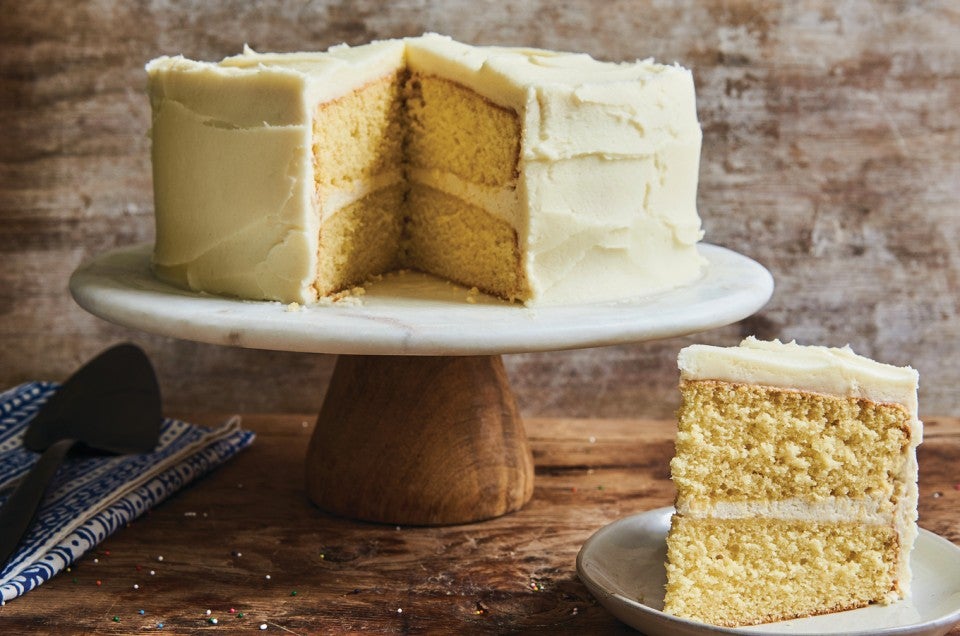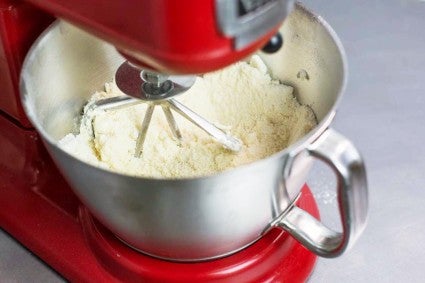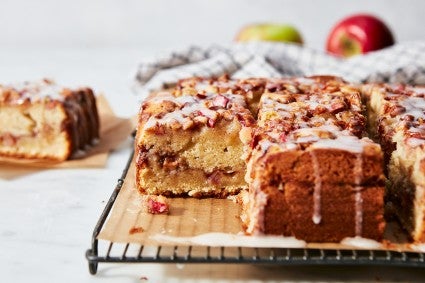What is reverse creaming, and why does it make great cake?
This unexpected technique is the key to a velvety crumb, tender texture, and less doming.


From blending to creaming to foam, we know there are many ways to mix your cake batter. (We wrote a whole post breaking down cake mixing methods!) But one in particular stands out, not only because it makes great cake, but because it takes an unexpected route to get there.
It’s the intriguingly named “reverse creaming” method, also referred to as the “paste” method. To use this technique, you beat softened butter directly into the dry ingredients, rather than creaming it with just sugar alone (the way you do in more common recipes). The reverse creaming step leads to a crumbly, sandy mixture that doesn’t really look like the first step to a promising cake batter. But trust the process. Next, you beat in the liquid ingredients, then eggs, and that sugary sand coalesces into a thick, smooth batter that’s ready to bake. Voilà!
But why do bakers bother doing this? What recipes does it work best with? And how did this method get its start?


Reverse creaming dates back all the way to Betty Crocker, America’s favorite fictional housewife. In the influential Betty Crocker's Picture Cook Book, published in the 1950s, the team behind Betty introduced the “double-quick method,” which they praised because it simplified the cake-baking process. The method isn’t the exact same as reverse creaming, but it follows the basic template: shortening (another solid fat) and 2/3 of the liquid ingredients are beaten directly into the dry ingredients, before the remaining liquid and eggs are added.
More recently, this method was popularized by Rose Levy Beranbaum, who included the method in her 1988 cookbook The Cake Bible. Inspired by techniques like the double-quick one, she made the crucial switch from shortening to butter. “I wanted to make a cake that had the velvety texture of boxed cake but with the flavor of from-scratch cake,” she explains. To make her butter cakes, she beats softened butter into the dry ingredients and a little of the recipe’s liquid, before adding the remaining liquid and eggs to make a batter. In the book, she wrote about how she chose this method because it “virtually eliminates any possibility of toughening the cake by overbeating.”
The approach certainly turned heads: In the book’s foreword, legendary baker Maida Heatter wrote, “I am intrigued by the technique for putting together a butter cake.” Perhaps she helped coin the name, as she described the method as “the reverse of starting by beating or creaming the butter.” (Rose, for what’s it’s worth, told me she’s not a fan of the “reverse creaming” name, but acknowledges that it’s what most people today call it.)
We’re fans of the method here at King Arthur, and we’ve included it in recipes both old and new. One classic example is our Golden Vanilla Cake, a dense, rich cake that’s perfect for stacking into celebratory layers. More recently, Senior Recipe Tester Susan Reid put it to use in this Apple Fritter Cake, resulting in a cake that’s sturdy enough to support over 3 cups of diced apples without being too heavy.

But why, exactly, is this type of cake worth veering off script? Just because we can? Of course not. It’s “faster, easier, and better,” says Rose. “It has no downside.”
More specifically, “not only does it emulsify better and have a more even texture,” Rose explains, “but it’s more tender.” Basically, by coating the recipe’s flour with butter, this method limits gluten development. Too much gluten development can make cakes tough, so this buttery coating acts as a safety net to prevent that from occurring with too much mixing. Writing for Food52, Emma Laperruque describes how this process mimics store-bought cake mix and the way solid fat premixed with dry ingredients results in tender, moist cake — every time.
The result is a velvety, tender crumb. When made this way, baked cakes tend to be flat, rather than domed, and are slightly more dense than creamed cakes. “The crumb is sturdier and holds up to soaking with simple syrup, as well as having the weight of more layers on top,” explains Susan. Plus, “It’s an easier method for beginners because you completely avoid a potential broken batter,” she adds. “It's much less fussy.”
Try out the reverse creaming method yourself with our Golden Vanilla Cake, Tender Vanilla Cake, or Apple Fritter Cake.
Cover photo (Golden Vanilla Cake) by Liz Neilly.

